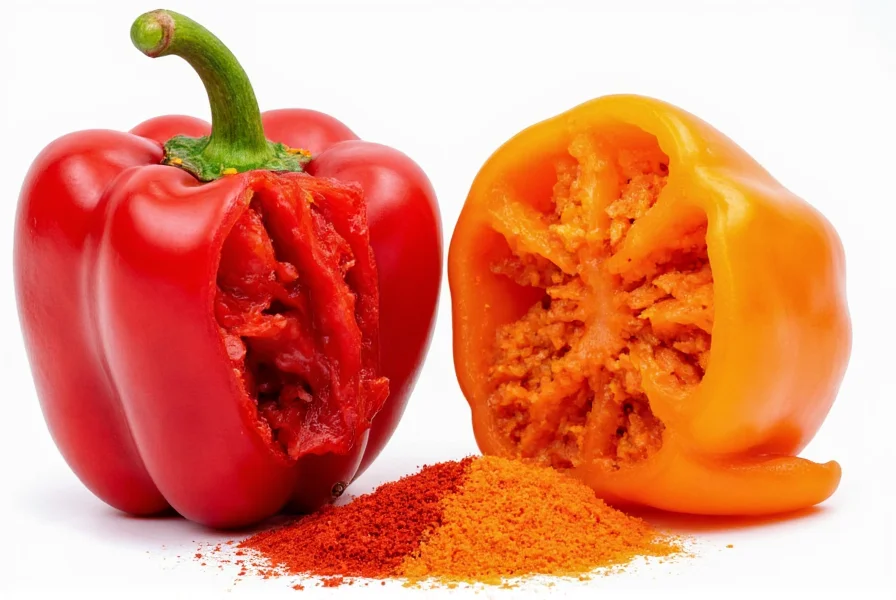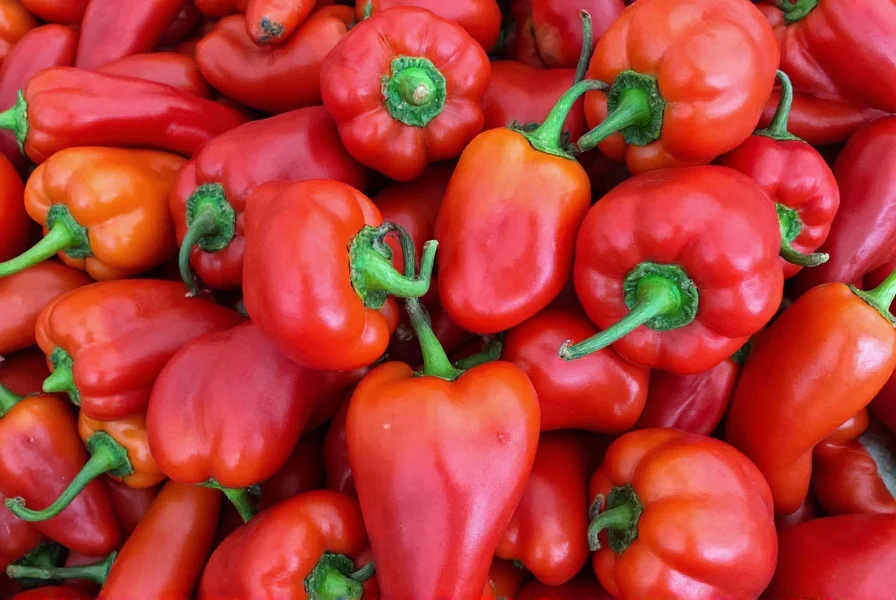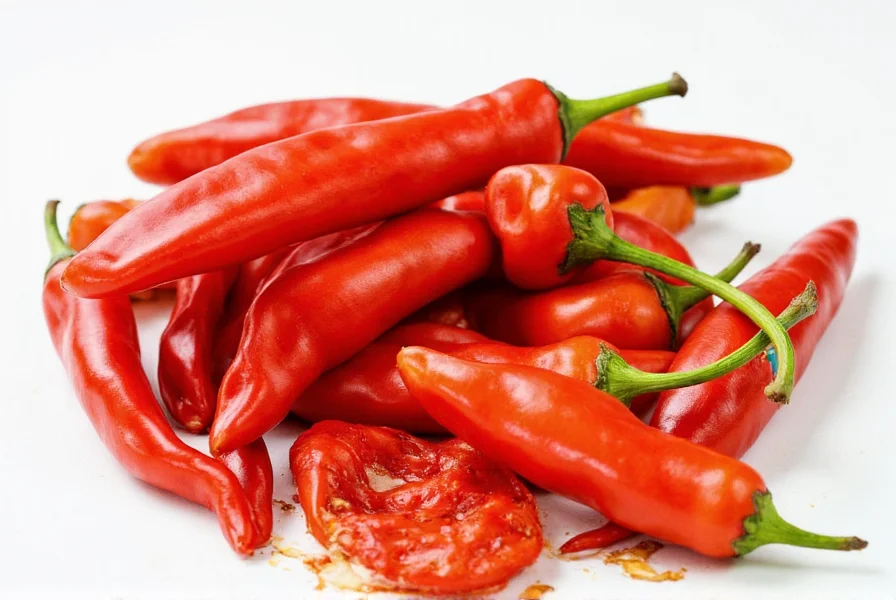The term "paprikas" typically refers to either paprika (a vibrant red spice made from ground peppers) or paprikás (a traditional Hungarian stew). Paprika is a spice blend ranging from sweet to hot, while paprikás is a creamy meat stew featuring paprika as its key ingredient. Understanding this distinction helps avoid confusion in recipes and culinary discussions.
Many home cooks encounter the term "paprikas" and immediately wonder whether they're dealing with a spice or a dish. This confusion stems from linguistic differences between English and Hungarian. Let's clarify both concepts to enhance your culinary knowledge and prevent recipe mishaps.
What Is Paprika: The Essential Spice
Paprika is a ground spice made from dried bell peppers and chili peppers. Originating in Central Mexico, it traveled to Europe through Spanish explorers and became deeply embedded in Hungarian cuisine. The spice varies dramatically based on pepper variety and processing methods.
Types of Paprika Explained
Understanding paprika varieties prevents recipe disasters. Not all paprikas are interchangeable:
| Type | Heat Level | Flavor Profile | Best Uses |
|---|---|---|---|
| Sweet Hungarian | Mild (0-100 SHU) | Fruity, earthy | Goulash, chicken paprikás |
| Smoked Spanish | Mild to Medium | Wood-fired, deep | Paella, roasted vegetables |
| Hot Hungarian | Medium-Hot (5,000-15,000 SHU) | Peppery, intense | Spicy stews, marinades |
When selecting paprika for Hungarian paprikás recipes, authentic cooks prefer sweet Hungarian paprika for its balanced flavor. The spice loses potency when exposed to heat for extended periods, so many chefs add it toward the end of cooking.

What Is Paprikás: The Traditional Hungarian Dish
Paprikás (pronounced pah-pree-KAHSH) represents one of Hungary's national dishes—a rich, creamy stew featuring meat simmered in a sauce made primarily with paprika. The dish traditionally uses chicken, but variations include beef, pork, or even fish.
The magic happens through a technique called "rántás"—a roux made with lard, flour, and generous amounts of paprika. Sour cream gets whisked in at the end, creating a velvety sauce that defines authentic Hungarian paprikás. Many American recipes mistakenly use tomato, which traditional Hungarian cooks would never include in paprikás.
Classic Chicken Paprikás Recipe Elements
- Meat: Bone-in chicken pieces (thighs and drumsticks)
- Aromatics: Onions slowly caramelized in lard
- Signature ingredient: 3-4 tablespoons sweet Hungarian paprika
- Thickener: Flour and sour cream mixture ("főzelék")
- Accompaniment: Nokedli (Hungarian dumplings)
Authentic Hungarian paprikás never contains tomatoes or bell peppers—common additions in non-traditional versions. The dish's color comes solely from quality paprika, which should create a rich red hue without making the dish spicy.
Key Differences Between Paprika and Paprikás
The confusion between these terms causes frequent kitchen errors. Here's how to tell them apart:
- Paprika (no accent) = The spice (powdered peppers)
- Paprikás (with accent on the 'a') = The Hungarian stew
- Paprikash = Anglicized spelling of the dish
When searching for authentic Hungarian paprikás recipes, include "Hungarian" in your query to avoid Americanized versions with tomatoes. For the best results with sweet paprika in cooking, store it in an airtight container away from light—its flavor compounds degrade quickly when exposed to air.

Practical Tips for Cooking with Paprika
Maximize paprika's potential with these professional techniques:
- Bloom the spice: Mix paprika with a small amount of warm water or oil before adding to dishes
- Temperature control: Never heat paprika above 175°F (80°C) to prevent bitterness
- Freshness test: Rub between fingers—if aroma is weak, replace your spice
- Layering flavors: Combine sweet and smoked paprika for depth in vegetarian paprikás recipes
When making traditional Hungarian meat paprikás, add the paprika after sautéing onions but before adding liquid. This "blooms" the spice in the fat, releasing maximum flavor without burning. For vegetarian paprikás variations, mushrooms or potatoes work beautifully with the paprika base.
Frequently Asked Questions
What's the difference between paprika and paprikás?
Paprika refers to the ground red pepper spice, while paprikás (with an accent) is the Hungarian stew made using paprika as the primary seasoning. The spelling difference indicates whether you're discussing the ingredient or the dish.
Can I substitute smoked paprika in traditional Hungarian paprikás?
Traditional Hungarian paprikás uses sweet Hungarian paprika, not smoked varieties. Smoked paprika creates a different flavor profile that isn't authentic to the dish. For authentic results, seek out Hungarian sweet paprika specifically labeled for paprikás recipes.
Why does my paprika taste bitter in recipes?
Bitter paprika usually results from overheating. Paprika burns easily at temperatures above 175°F (80°C). Always add it toward the end of cooking or bloom it in cool oil first. Old paprika also develops bitter notes as its flavor compounds degrade over time.
What's the best substitute for sour cream in paprikás?
For authentic texture, full-fat Greek yogurt makes the best substitute when tempered properly. Never add cold dairy directly to hot paprikás—whisk a small amount of hot liquid into the dairy first, then gradually incorporate back into the stew to prevent curdling.
How should I store paprika to maintain freshness?
Store paprika in an airtight container away from light and heat. The spice cabinet works well, but the refrigerator extends shelf life significantly. Properly stored, quality paprika maintains flavor for 6-12 months. Check freshness by rubbing a small amount between fingers—if the aroma is weak, it's time to replace.











 浙公网安备
33010002000092号
浙公网安备
33010002000092号 浙B2-20120091-4
浙B2-20120091-4